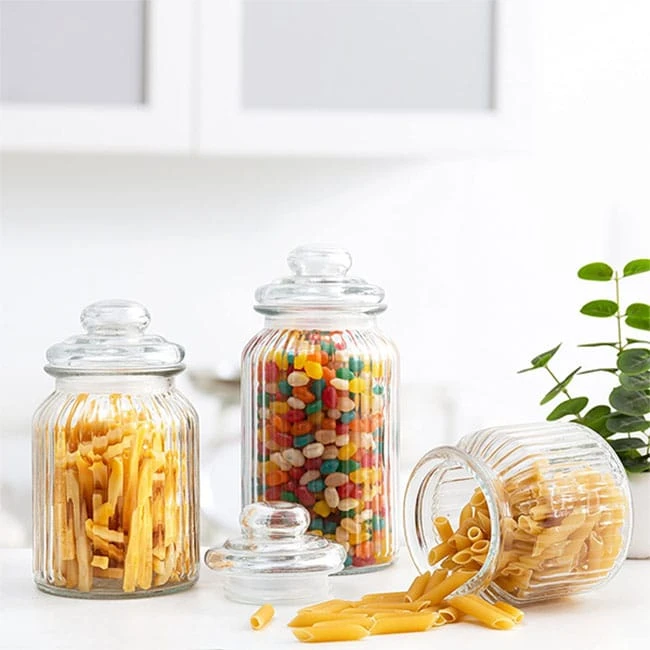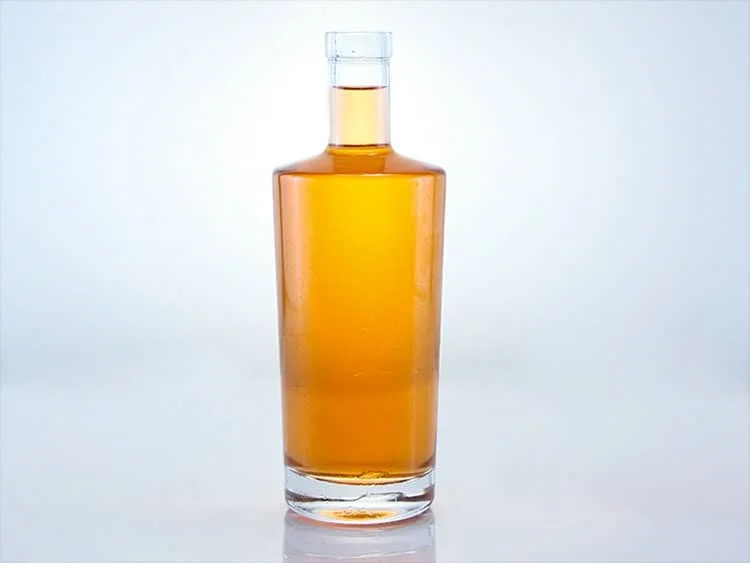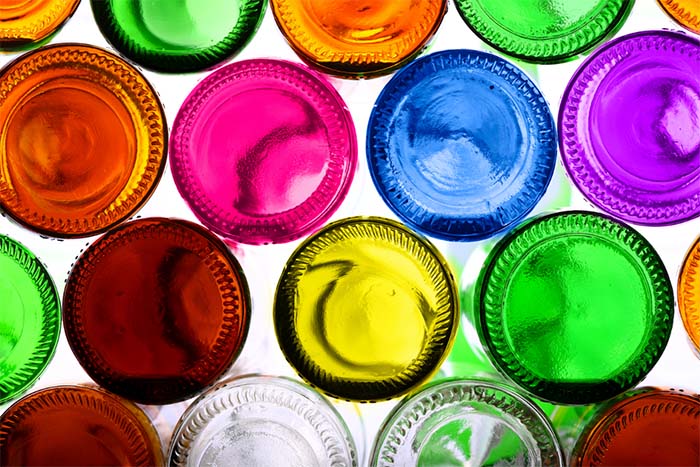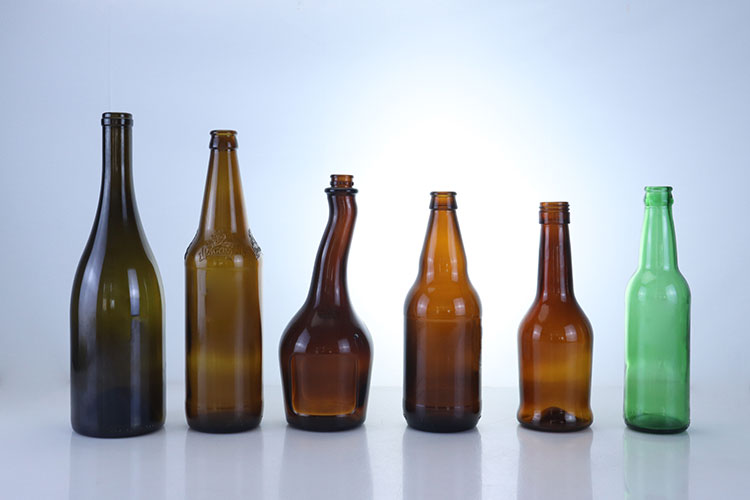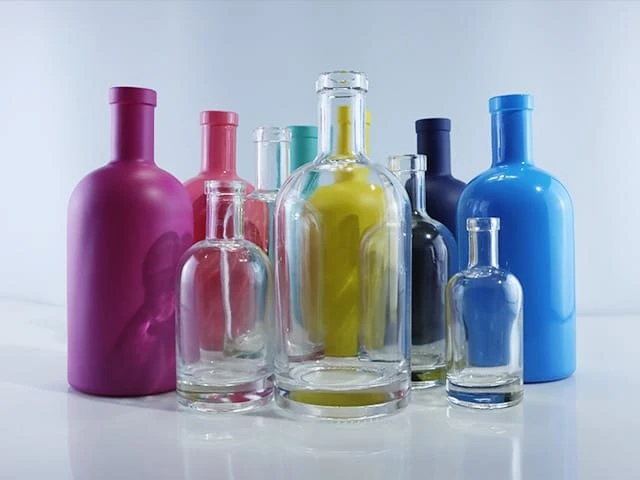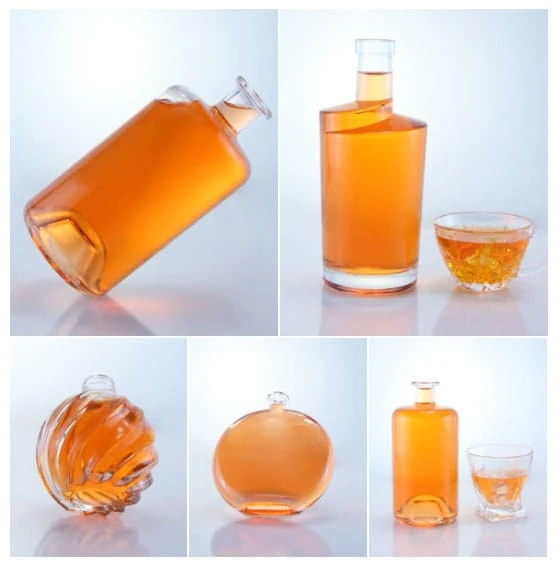Different shapes of glass bottles can be provided, such as: glass wine bottle, beverage glass bottle, honey glass bottle, canned glass bottle, pickle glass bottle, cosmetic glass bottle, medicinal glass bottle, glass candle holder, etc.
Creating glass containers can be done by one of two different processes – blow molding and blow molding, or pressure blow molding. Each process is chosen based on the type of glass bottle being made. All glass bottles start with raw materials. Silica, soda ash, limestone and crushed glass are combined into a specific mixture according to the desired properties of the bottle. The mixture is then melted at high temperature in a furnace until it becomes a molten material, ready to be shaped. The type of glass that this blend will produce is called soda lime glass, which is the most popular food and beverage glass.
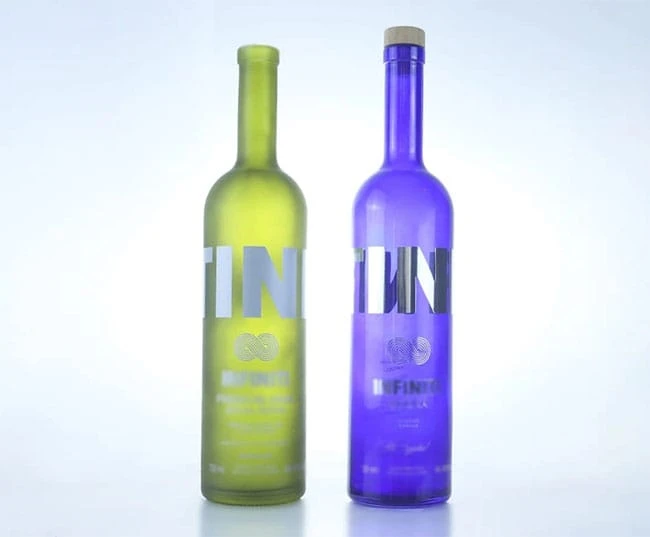
glass forming method
The molten glass gobs are cut by perfectly timed blades to ensure that each gob has the same weight before entering the molding machine. The weight of the gob is important to the forming process of each glass container being manufactured. Molded glass is made by gravity feeding gobs of molten glass into a molding machine, where pressure forms the basic shape of the neck and bottle. Once the neck and general glass bottle shape is complete, this form is called a parison. To get the final container shape, use one of two processes.
Pressure blowing process
The pressure blowing process is the most commonly used method in glass bottle manufacturing. It uses a separate segment (IS) machine, which is divided into different segments to produce multiple containers of the same size at the same time. The molten glass is cut to a specific gob size using a shear blade. The gob falls into the machine by gravity. A metal plunger is used to push the block down into the mold, where it begins to take shape and become a parison. The parison is then transferred to a blow mold and reheated so that the parison is soft enough to complete the size of the glass. Once the parison is reheated to blowing temperature, air is injected to blow the container. Pressure shocks are commonly used to make cans and jars because their size allows the plunger to enter the parison.
complete the process
Regardless of the process used, once the bottle is fully formed, it is removed from the mold and transferred to the annealing furnace. The annealing furnace reheats the bottle to about 1600°F and then gradually cools to about 390F. This process allows the glass to cool at a uniform rate – eliminating internal stresses in the glass that can cause cracking or shattering.


